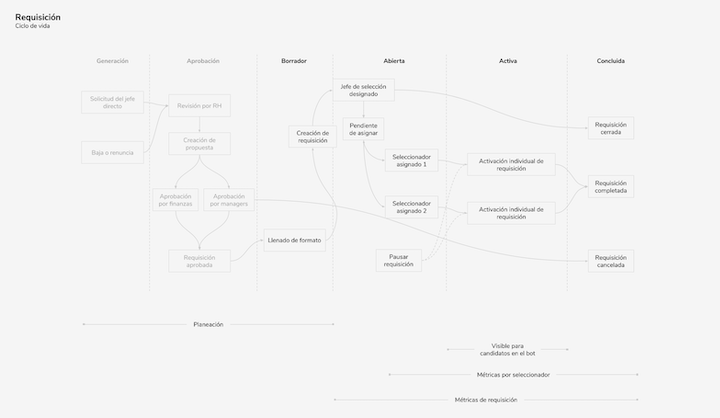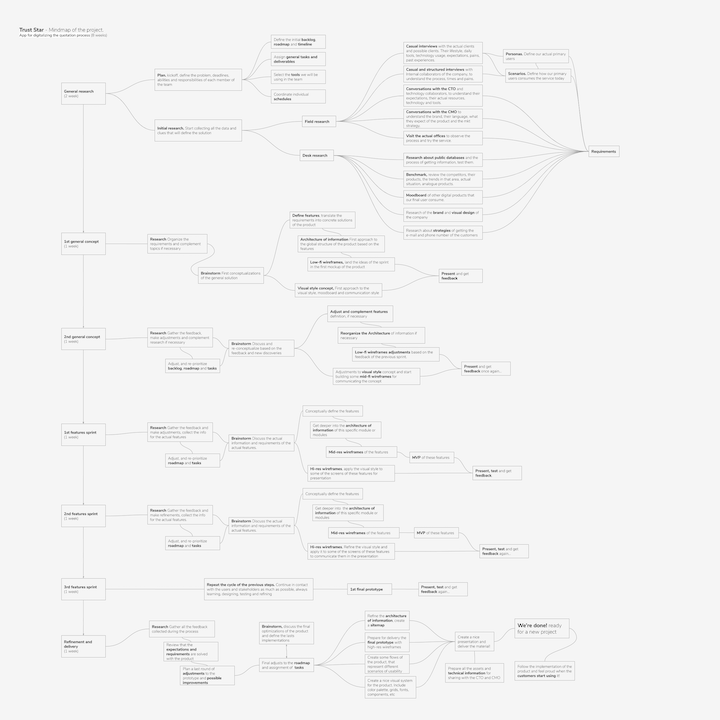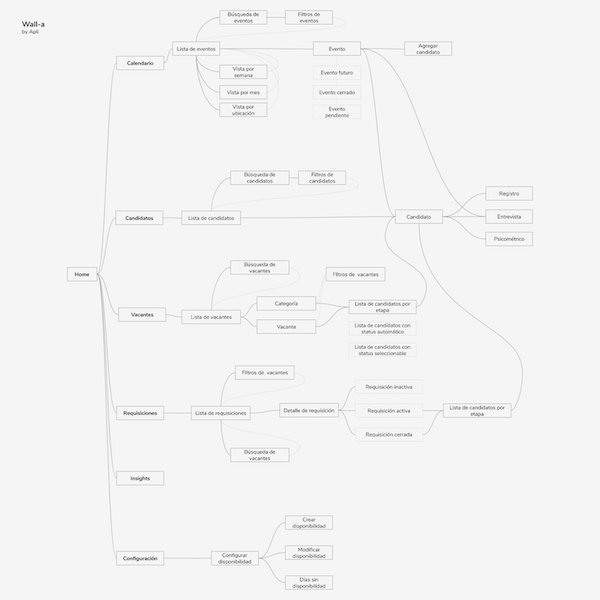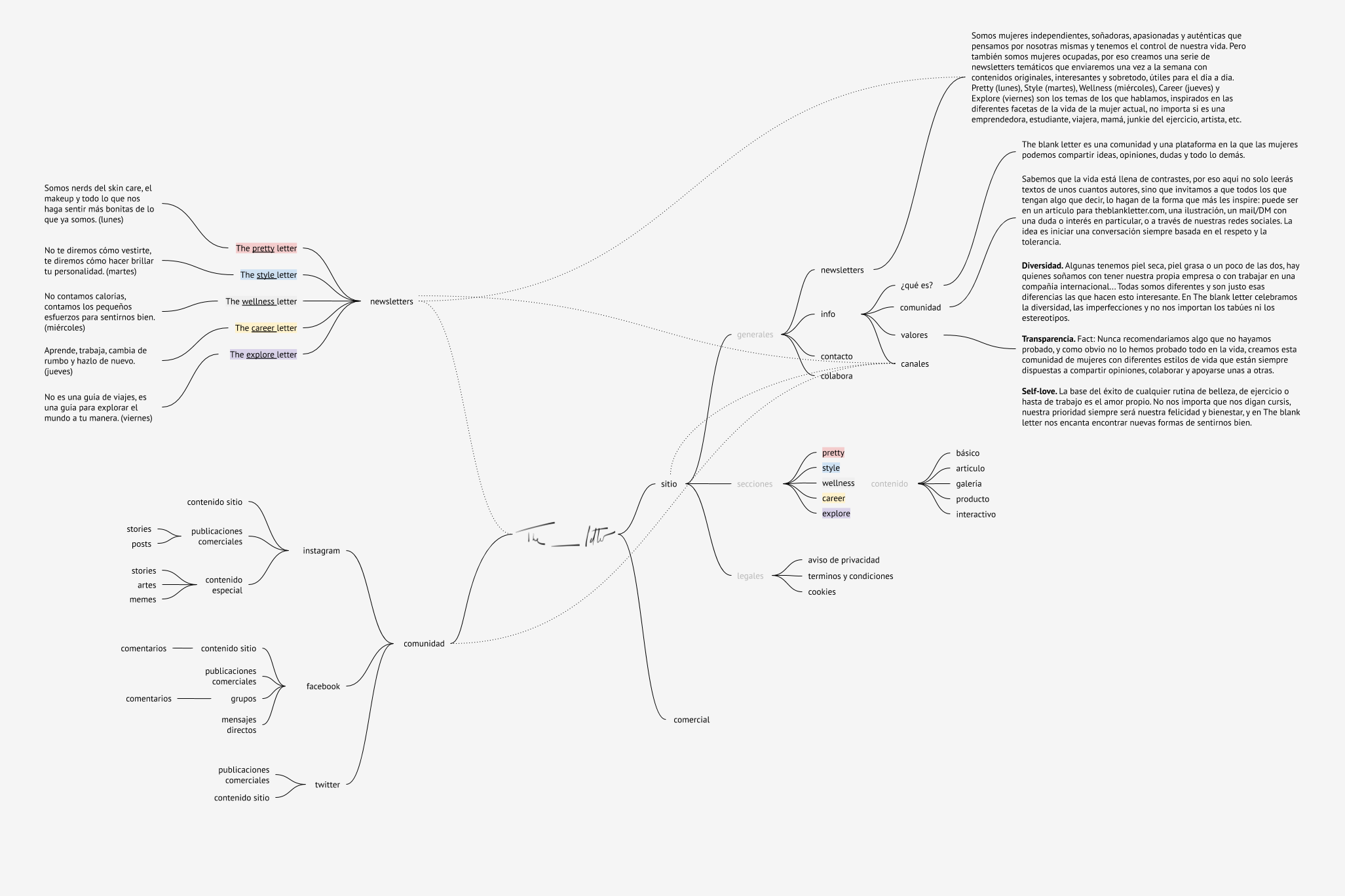For a designer the most basic tools are a pencil and a sheet of paper. Normally the first representation of the ideas begins there. In this first approach we want to throw away all our ideas. Usually we start with a sketch or a rough drawing. When these ideas are plans or concepts a mindmap is usually a great tool. I mean, the technology has evolved a little bit. Probably we can use a tablet and a stylus instead, or some diagram software. The idea is to represent the ideas we have on our heads.
 example that represent the lifecycle of a feature in a product
example that represent the lifecycle of a feature in a product
When I start planning a project, visualizing a new feature, or just exploring a certain idea, mind maps always help me. This tool can be used as a quick individual exploration. They can also be created in groups. When the information is clear enough it can even work as a communication resource.
 This one explores a project planning.
This one explores a project planning.
For me, the mind map is a conceptual representation without defined rules. It’s a way of putting all your related ideas in one canvas and organizing everything in a way that makes sense. To important elements are the connectors and the hierarchy between ideas.
As there are no rules, you can use whatever resources you can imagine. Various types of connectors to differentiate the relationships of the elements. Color and tags can help to define an alternative organization of the nodes. You can use different font weights and sizes. You can include doodles for expressing certain ideas or even pasting some images or physical objects.
 mindmap for understanding the architecture of an app.
mindmap for understanding the architecture of an app.
The way I see it, all the knowledge can be organized in an infinite and complex mind map. There are main topics, there are subtopics and then an enormous number of ramifications. Everything is connected at some point. There exist different scales and scopes of the knowledge that define each mindmap. There are also several variations and approaches for each topic.
All the knowledge can be organized in an infinite and complex mind map.
So, when you draw a mindmap of a certain idea you’re creating a node with a specific scope. To be clear, I’m not talking about verified or scientific knowledge. It’s just about ideas, just like the Internet itself.
Once I have represented my ideas, I can have a clearer context of the project. I can also use to review this approach with my teammates. The map can continue growing and evolving until it achieves its goal. Finally, this will also be a great resource for documenting the idea.
